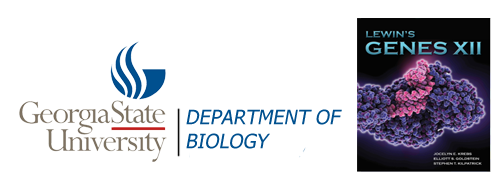- Home
Welcome !
Welcome to john houghton's home page for his biology courses. This site is designed as a hub for curating and sharing lectures, course syllabi, assignments, and links to relevant resources. Use the menu bar at the top of the screen to navigate through the site and to find potentially useful/related links under "Resources".
(Please note: this page is currently under construction.)

- BIOL 4564/6564
Fall '20
Biol 4564/6564 home page (syllabus)
Lectures
- Lecture 1
- Lecture 2
- Lecture 3
- Lecture 4
- Lecture 5
- Lecture 6
- Lecture 7
- Mid-Term Exam I
- Lecture 8
- Lecture 9
- Lecture 10
- Lecture 11
- Lecture 12
- Lecture 13
- Lecture 14
- Lecture 15
- Mid-Term Exam II
- Lecture 16
- Lecture 17
- Lecture 18
- Lecture 19
- Lecture 20
- Lecture 21
- Lecture 22
- Lecture 23
- Lecture/PPT Session1
- Lecture/PPT Session2
- Lecture 24
- Lecture/PPT Session3
- -
Results/Answers
- Courses
- Resources
General Resources

Regulation: higher orders of control.....?
The repressor protein has two binding sites: one for the operator and the other for the inducer, which changes the shape of the repressor protein and disallows its binding to the operator.
The repressor protein is coded for by the regulatory gene, lacI.
The lacI gene just happens to be located near the structural genes. However, not all regulatory genes are near the operons that they control.
Regulatory genes like lacI have their own promoters. In this instance, the lacI gene is expressed constitutively (i.e., expression is constant).
The lac operon: default OFF....inducible in the presence of substrate.
e.g. expression of genes involved in the synthesis of amino acids, such as tryptophan in the trp operon.
The trp operon inE. coli: is repressible -Default it is ON...., but is repressible in the presence of product.
In the absence of tryptophan, RNA polymerase transcribes the trp operon, leading to production of enzymes that synthesize tryptophan.
When tryptophan is present, it binds to a repressor.
In contrast to the LacI protein, the unbound trp repressor (TrpR) is inactive. When tryptophan binds the repressor, the repressor changes shape and becomes active.
The repressor in turn binds to the operator of the trp operon, blocking production of the enzymes that synthesize tryptophan.
As tryptophan concentration rises, production of tryptophan drops off.
Tryptophan is the molecule that binds and activates the repressor. As the function of tryptophan is to enhance repression of the trp operon, it is, therefore, called a corepressor.
The difference between inducible and repressible systems is small, but significant.
In inducible systems, an inducer from the cell's environment prevents a repressor from blocking transcription, or enhances RNA polymerase trancription.
In repressible systems, a co repressor produced by the cell activates a repressor, enabling it to block transcription.
But this is only a part of the story......
Eukaryotes utilize a a similar system of antagony of repressors vs activating proteins......they also to solve different problems and have a lot more complexity, which requires considerably higher orders of regulation.....
While there are always controls for each of the different steps in the central dogma....these are but the first steps in an understanding of regulation at the level of gene expression,
Potential Benefits and Problems with an understanding of regulation and the "new" Biotechnology








